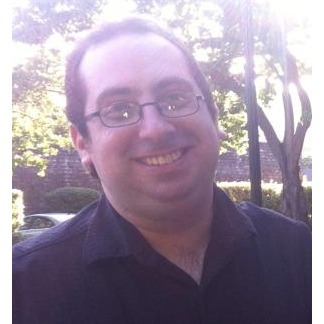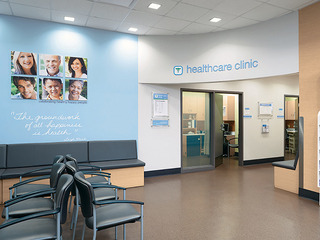

Last week, Vator and HP held its latest salon, called The Future of Clinics, in which a group of entrepreurs from startups such as Heal, Solv, Crossover Health and Heal got together to discuss the changing way that care is being delivered, and what that means for the future of the doctor’s office.
The panel, moderated by Bambi Francisco Roizen (Founder and CEO, Vator) and Archana Dubey (Global Medical Director, HP), featured Dr. Pat Carroll (Chief Medical Officer, HIMS/HERS), Jenni Vargas (Chief Strategy Officer, One Medical), Yumi Diangi Taylor (founder of TeraPractice at Sutter Health/ Palo Alto Medical Foundation), Karoline Hilu (Chief Strategy Officer, Crossover Health), Justin Zaghi (Chief Medical Director, Heal), Heather Fernandez, (co-founder and CEO, Solv Health) and Mona Chadha (Chief Strategy Officer Bay Area, Dignity Health).
When it came to the future of the doctor, the panel seemed to split into two camps: on one side were those that believe the doctor is dead, and the other that believes the doctor is alive. Well, maybe it’s not quite that simple, but that’s the basic idea.
While all of the panelists want doctors to work at their best, and to be able to provide the best care, some, like Dr. Carroll, Taylor and Hilu, are believers in tech replacing the doctor to some degree, while also allowing the doctor to practice at the top of their field. That might means more patients doing more self-diagnosing online, or virtual first visits before a patient visits the exam room.
Hilu kicked off this part of the conversation by saying bluntly, “I just don’t believe in future of clinics,” but instead in a “digital-first, team-based experience.”
The most important thing about the doctor/patient relationship, she noted, is trust.
“I would not define care as cost; I think cost is a reality, but I would define care as trust. At the core of all these models which work, there is trust driven by time with the provider, trust driven by clinical excellence, trust driven by immediate access,” she said.
“We, at Crossover, deeply believe in a digital first experience with a dedicated, integrated team that will always see you, whether it’s 2 a.m. or 2 p.m. and have access to your clinical records. Part of the challenge is infrastructural; if you are constantly repeating your story, the provider has a very limited amount time, it is not going to drive trust and, therefore, it is not going to drive care.”
Dr. Carroll spoke next, and discussed an incident that his daughter recently had with a primary care doctor.
“Recently my daughter, she had some really funky neuropathy symptoms and overwhelming fatigue. This was about three months ago and went to a primary care physician who had literally seven minutes; she counted,” he said.
Instead of listening to her, the doctor told her, “It’s nothing, you’re anxious, you just had a baby, here’s some Klonopin,’” which Carroll described as “the worst medication you can give” due to how addicting it is for patients.
“So, my daughter called me and said, ‘Dad, I don’t know what to to.’ I said, ‘What are your symptoms?’ and she’d actually gone on Google, like 35 percent of folks who Google when they have symptoms. She said, ‘I think I might have hypothyroid,’ and Hashimoto’s hypothyroid is actually associated with peripheral neuropathy. I thought, ‘Wow. I’ve been out practice for a couple of years but I didn’t even pick up on that.’ She went through her symptom list, she read some articles in the New York Times about someone who had a very similar things. She called her primary care physician, demanded those labs; sure enough, thyroid antibodies, her TSH is way up, her Hashimoto’s antibody markers are way up. Then she arranged her visit for her endocrinology appointment,” Carroll said.
“Did we need a primary care physician in that? No. My daughter texted me and said, ‘Dad, healthcare is going to AI-backed symptom checkers to get you to the right place, to get you the right lab test, at the right time. And all my primary care physician did was actually hinder my progress to getting a diagnosis and getting better.'”
Incidents like these, he explained, are the reason that a lot of people don’t even want to see a physician face to face, as there are faster, less burdensome ways to get treatment.
“Even on telehealth platforms, many are very comfortable not having a physician face interaction, as long as they get the information and get the right direction, they’re fine with that. So, I do think we actually have to ask, as a primary care physician this hurts me, what is the future of clinics? What is the future of primary care? I think it’s changing dramatically,” he said.
Dubey then spoke up in defense of primary care doctors, which she also happens to be, noting that, while “that story does not justify the rest of the primary care physicians out there,” primary care physicians do more than just diagnose people; they also “provide good treatment.”
Taylor spoke next, noting that, at TeraPractice, they are able to move 90 percent of their care to virtual, agreeing with what Dr. Carroll said about people actually preferring to have a telephone conversation, and what Hilu said about Trust.
“Once that relationship and trust have been established, they want the most expedient way to transmit information,” she said.
“I think the care model is also very important. There’s been a lot of work in the patient-centered medical home, etc, but one of the things that we do, and specifically in supporting patients with chronic disease, is have a health coach that’s integrated with our practice. So, a diabetic patient might have one touch point with me in a year, but they will have 20 touch points a with dietitian health coach. That’s not a physician-centric experience that patients are having.”
Francisco then pointed out that, unlike with Crossover, with One Medical and Heal it is more physician-centric.
“You have a team but you’re about you want your doctor to be well versed in all those things, and to spend 30 or 40 minutes with the patient. So, you have the team-based approach and the doctor approach,” she noted.
Vargas replied, taking the opposite view of those who are spoken already.
“I would disagree a little bit with Karoline in terms of, I don’t think the clinic is dead and I don’t think the doctor is dead, at all. There is no evidence,” she responded. “One Medical is growing incredibly fast; we have physical offices and digital. What’s that all about? You have to have good offices and good doctors and good technology to grow, because there is a tremendous demand for people to physically come in, spend 30 minutes with someone who actually cares about you and knows about you and will listen to you.”
For example, in One Medical’s clinics, they will draw the patient’s blood and then send it to either Lab Corp or Quest for them. Even though that doesn’t make the company any money, Vargas noted, it does make the patient happy.
“It’s physical, people want to check their cholesterol. So, I think we have to be a little bit careful. I don’t want to throw the baby out with the bathwater. Sucky clinics and not very nice doctors are dead, but good ones are probably going to be around. You need also the clinic to be physically located in place that’s convenient to people, that’s also something that’s very different, and we do distribute out clinics in high density areas to make it easier to get there.”
“I would say, ‘digital first, clinic follows as optional’,” said Hilu in response.
Fernandez then tried to split the different between the two sides, noting that what people will want will depend on their situation; sometimes people will want to see and a doctor and sometimes they won’t, but it’s not a one size fits all situation.
“When I was at Trulia I sat on a number of panels where they said, ‘Is the real estate agent dead? Are they dead? Are real estate brokers doing away?’ And there were some people who said, ‘Absolutely, dead. Technology!’ And our response then is the same as mine now, which is the reality of care is consumers have disaggregated it, and there will be different flavors for different needs,” she said.
“When my son Cyrus has a rash during the day, he’s largely healthy, to talk to some rando on telemed or DoD was totally fine. Because then I knew I didn’t have to cancel my day, I can send my son to school. However, when I have my annual, I might want to talk to someone. It will be driven by preference, it will be driven by access and need. But there’s not one, in my opinion, digital-first, clinic-first, must-have-doctor, don’t-have-doctor. There’s a theory of the way it should be, and then there’s the actuality of how consumers are managing their care today and my view is that will be much more disaggregated, and different flavors depending on your use case.”
Thanks to HP, UCSF Health Hub, Avison-Young, Scrubbed, S





















